Imagine walking into the past… no, wait! You don’t have to imagine. Exploring Monarch Cave, Utah is a museum of ancient life in the American Southwest. Discover pottery sherds, ancient corn cobs, grooves in sandstone from spear sharpening and food grinding, rock art and prehistoric ruins in this active travel adventure.
Disclosure: This post contains affiliate links. If you buy something from one of our affiliates, we receive a small commission at no extra charge to you. Thanks for helping to keep our blog up and running!
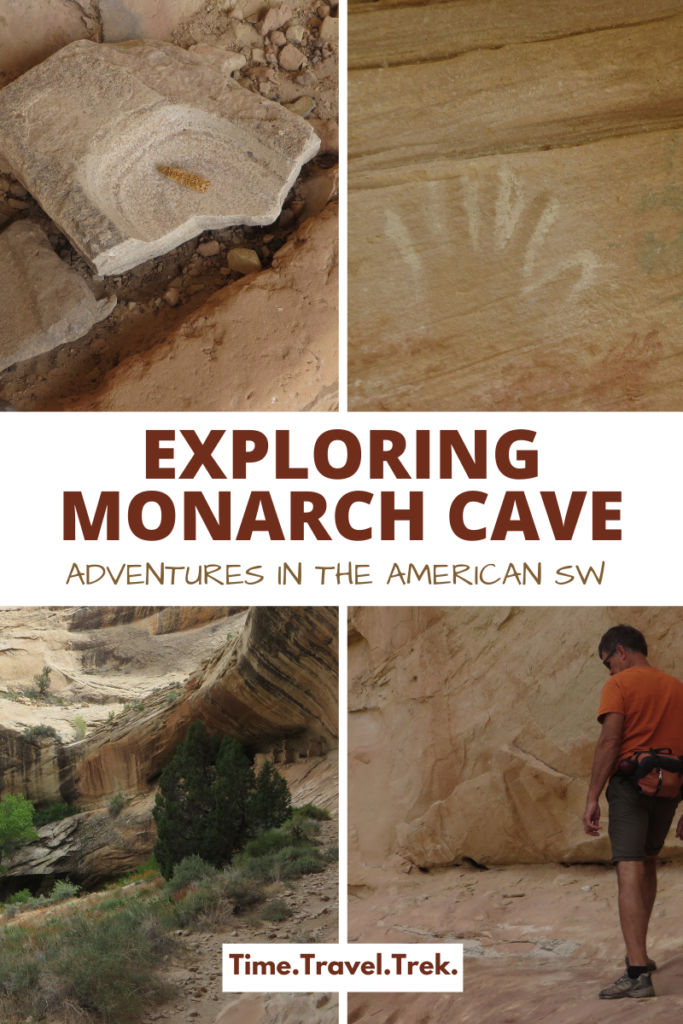
Table of Contents
A Depth of Understanding
Exploring Monarch Cave, Utah may seem like a random post, but bear with me. This is the first week of the new Biden administration. On his first day in office, President Biden set in motion plans to review the boundaries of Bears Ears National Monument. The protection of this incredible corner of the American Southwest is important.
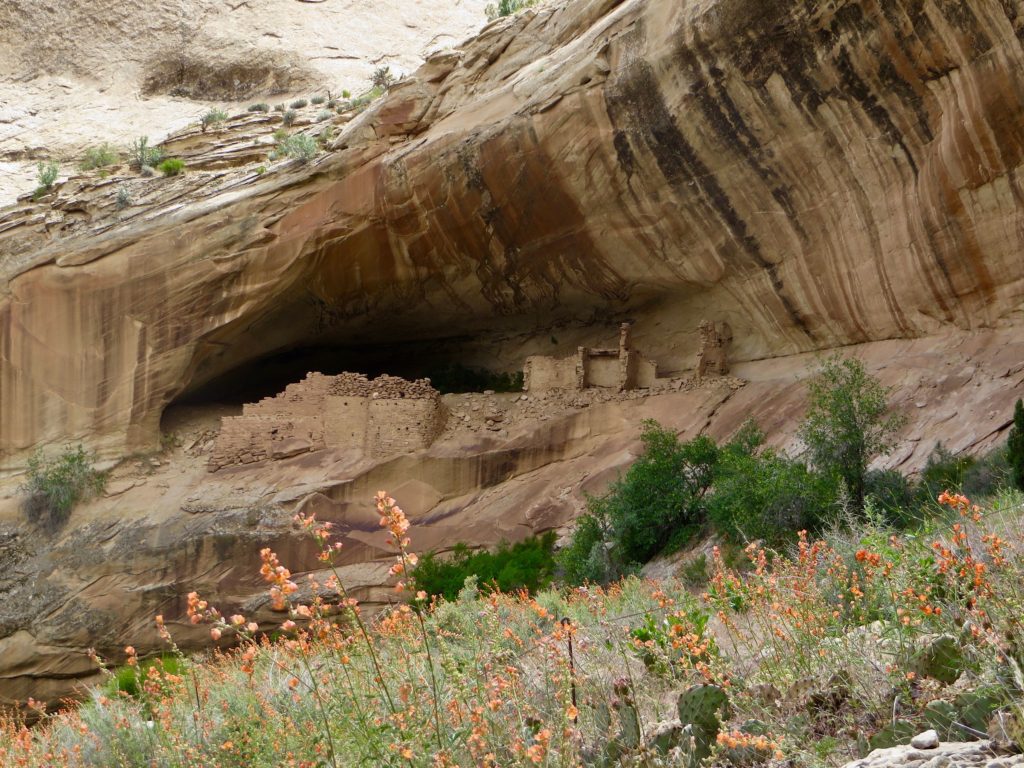
Monumental Changes
Bears Ears National Monument protected 1.35 million acres of southeastern Utah when President Obama designated it in December of 2016. One year later, President Trump issued a controversial executive order shrinking the monument to 15% of its original size. Monarch Cave and all of the sites along Comb Ridge and across much of Cedar Mesa were protected… until they weren’t.
Why Write About Monarch Cave?
I chose to write about Monarch Cave – among the countless other archaeological treasures scattered across cliffs and canyons of Cedar Mesa – for several reasons. First off, it is a well-known and often-visited site. In other words, it’s not too far off the beaten path. Secondly, it is easily accessed via a short hike. Thirdly, it was part of Bears Ears National Monument until 2017. And finally, it is a living museum of the past with everything from ruins to petroglyphs and pictographs to pottery shards and metates to inspire and give cause for thought.
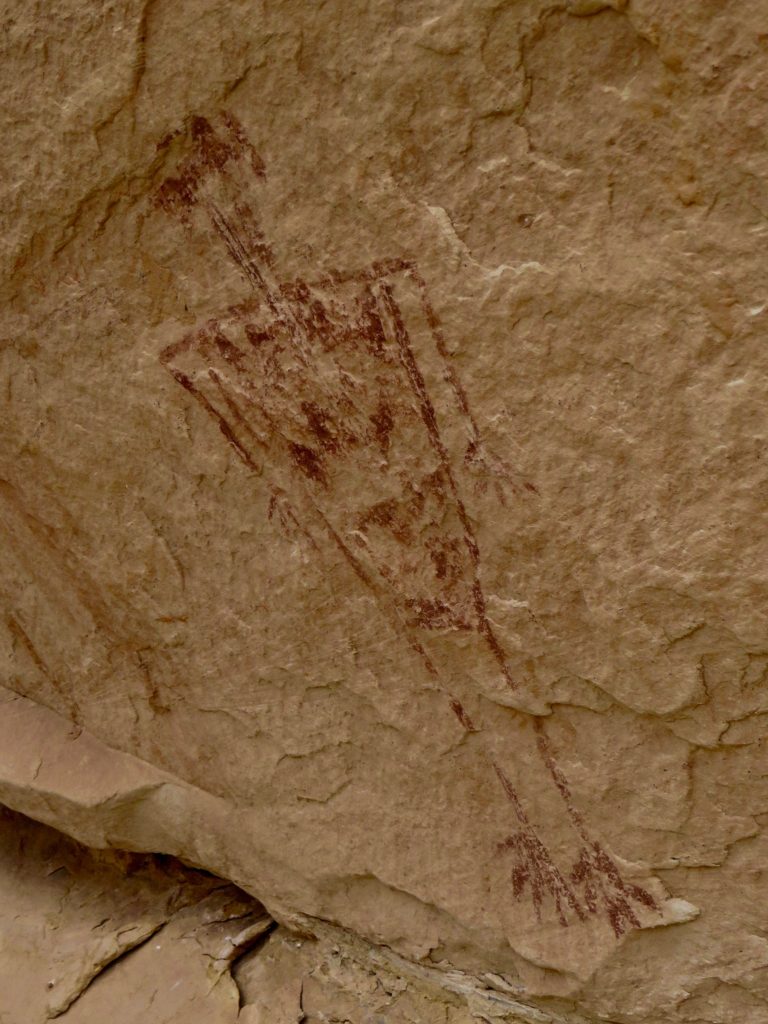
How do I get to Monarch Cave?
Monarch Cave is located in Butler Wash on the east side of Comb Ridge near the town of Bluff in southeastern Utah. Springtime is perfect for exploring this part of the country. We said our goodbyes to the rest of the group from our San Juan River rafting trip, setting up camp in Bluff for a little day-hiking adventure time!
From Bluff, we drove southwest on US-191 to Lower Butler Wash Road (Utah County Road 262). The turnoff is located between mileposts 41 and 42 if you are worried about missing it. The Lower Butler Wash Road is usually in good condition, but be prepared for ruts, sand and occasional rough spots.
Turn right onto this road, pass through the gate and take note of your odometer reading. The sites along here are not signed. The parking area for Monarch Cave is 7.2 miles up the road, off a short side road on the left. Follow the beaten path, occasionally marked with cairns (rock piles). Take the right fork when the trail splits at around ¾ mile from parking area.

Exploring Monarch Cave, Utah
Soon the ruins come into view high on the canyon alcove. The trail skirts a wide, slickrock ledge. Handprints are painted on the rock surface. There are paintings, or pictographs, of human figures and other abstract designs. Pecked images, or petroglyphs can also be found.
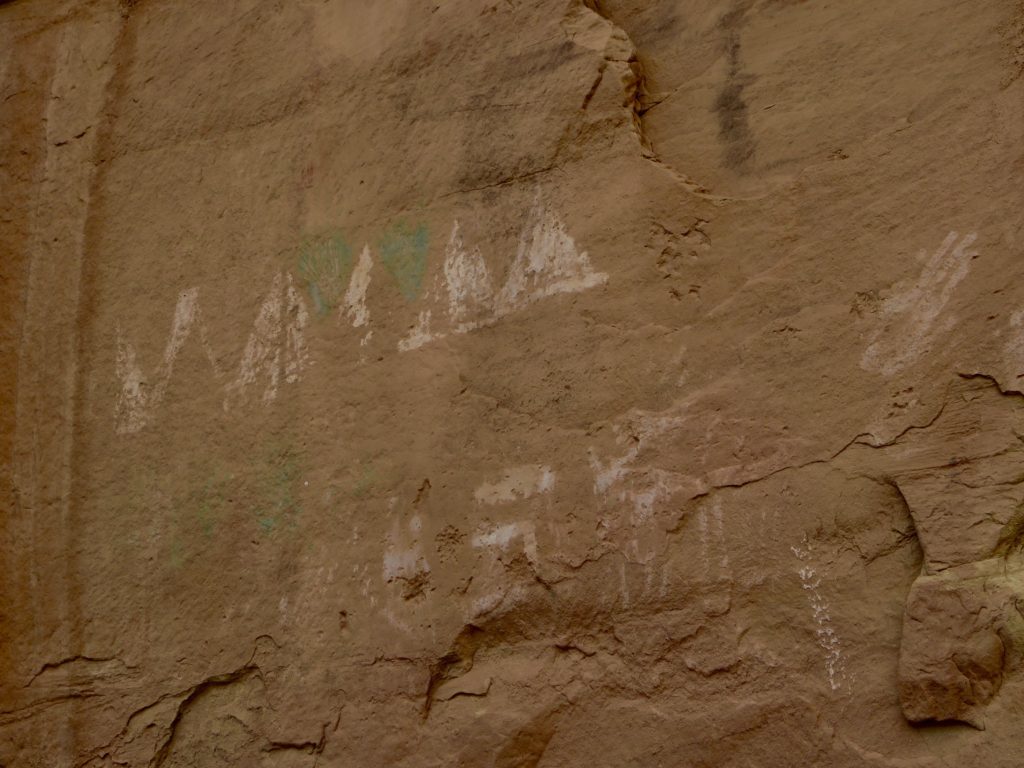
In the flat rock surfaces, look for metates. These oval-shaped grooves were created by Ancestral Puebloans grinding corn and seeds with smaller rocks called manos. Look for the metal ammunition box with the site register and information sheets. Look around and see if you can find the historic signatures of early exploring parties and expeditions.
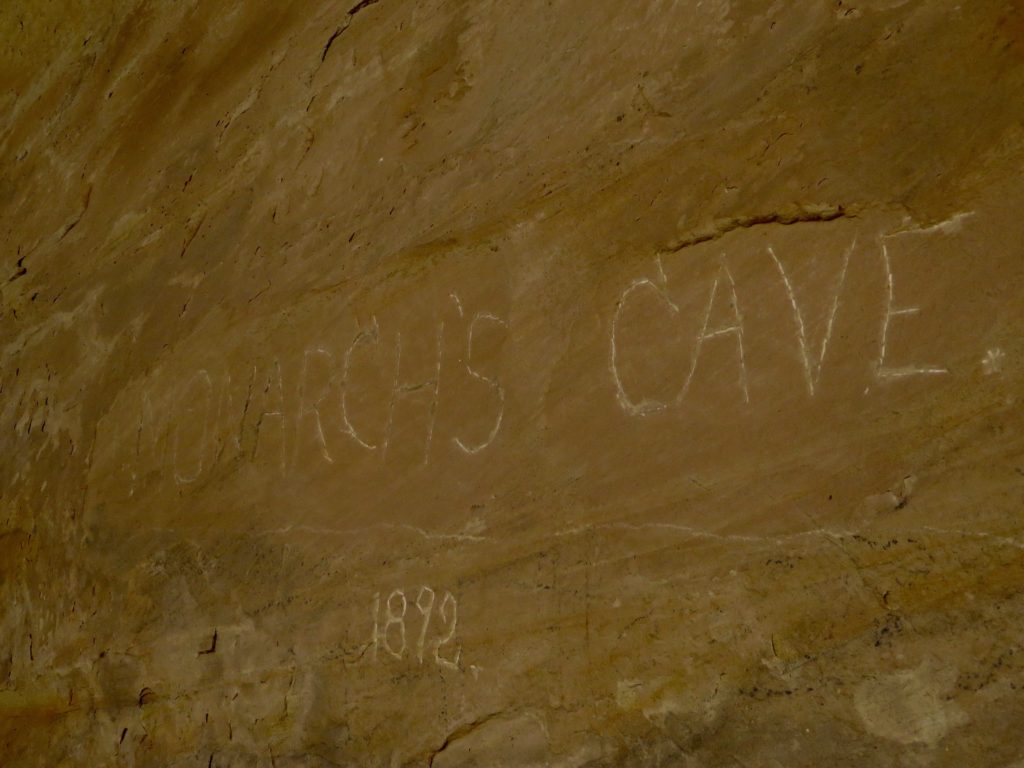
Who Lived Here?
Take time to sit and study the ruins. Imagine the completed structures covered in adobe. See the smoke curling up on the roof of the cave. Listen to the sounds of voice echoing across the canyon. Can you hear the sounds of the women grinding corn? Do you hear the calls of children? What about the voices of men as they sharpen spears or knap points?
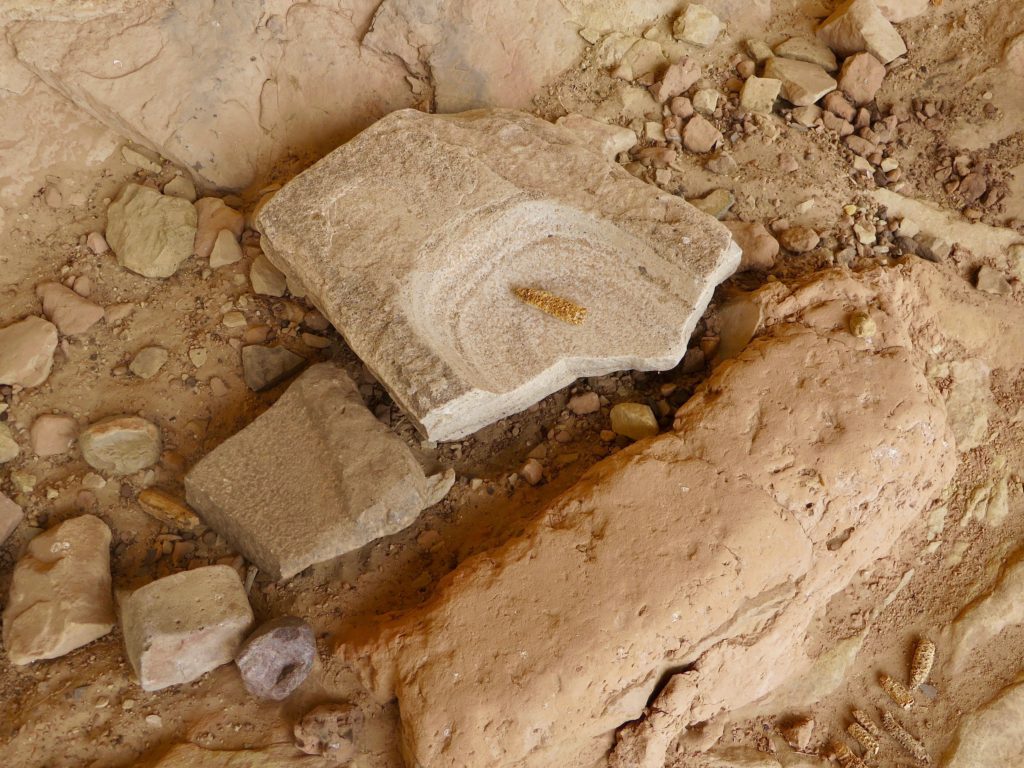
The Ancestral Puebloans
Monarch Cave was home to the Ancestral Puebloans – previously called the Anasazi – between 1150 and 1350 AD. This canyon was chosen for several reasons. It receives more winter sun than many other places. Secondly, the alcove is a fortress that is easier to defend. And lastly – and perhaps most importantly, there is a water source. In fact, the entire Comb Ridge has pockets of similar environments – sheltered alcoves for protection, winter sun, food and firewood and year-round pools and springs for water.
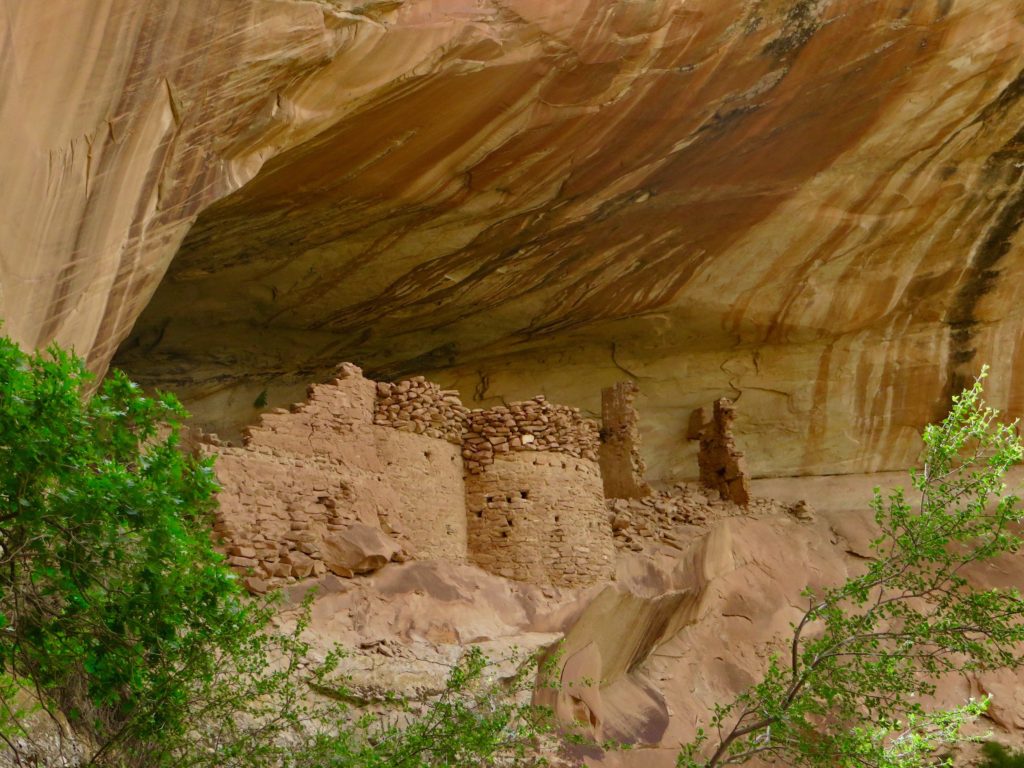
Final Words
Monarch Cave, Utah is a special place. It can’t help but capture your imagination if you give it time. If you connect, you care, and I believe it makes you want to protect. That, above all, is why I wanted to share Monarch Cave with you.
When You Go
We based out of Cottonwood RV Park, open March to mid-November, weather permitting. They have everything from pull-though sites for extra-long and wide rigs to tent sites. The restrooms are clean and large and the staff is welcoming.
PIN THIS POST FOR FUTURE REFERENCE!
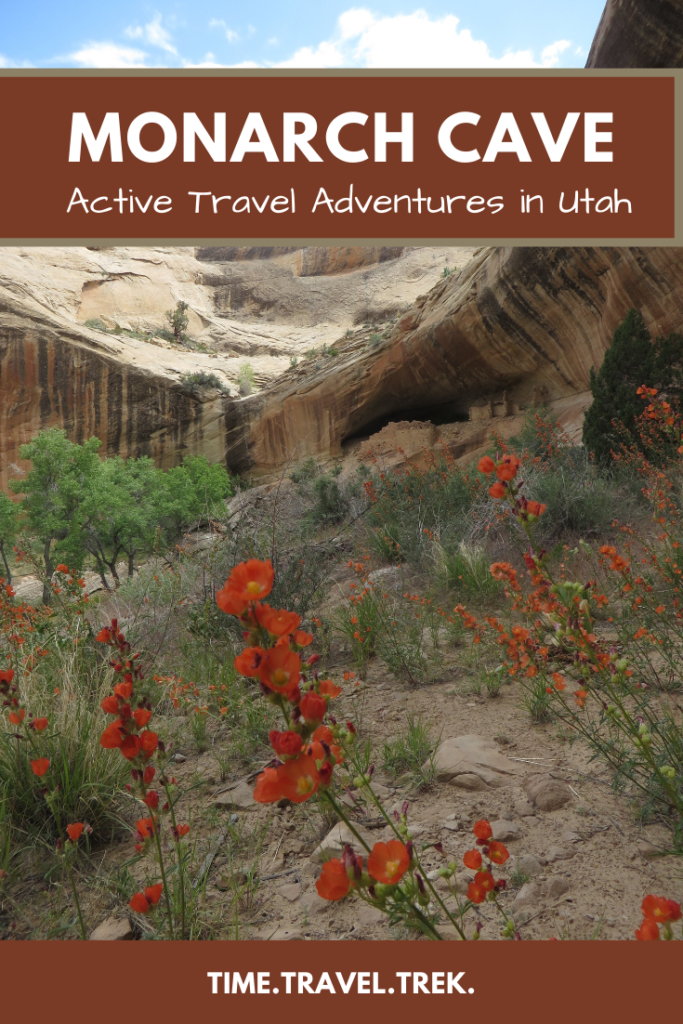



Very interesting read on traveling to Utah. We are potentially going there for a family trip, so this is helpful. Thanks for sharing.
So much to see and do in Utah – enjoy!
Great post, I wish I could go there right now!
You and me, both! I hope to be travelling back down that way some time this year – fingers crossed.
Very cool! I can’t wait to travel more!
Thanks for the article. We’re staying in Bluff for 5 days in June, and now we have another place we want to see! Unfortunately, there is just too much to experience in that time frame. Either multiple trips or move to Utah!
You’re welcome Peter – enjoy!
What an interesting place! Thanks for sharing.
I will be spending 4-5 days in Bluff with my family next month and have been snooping to see what interesting things we could do. Your post here and few others write-ups are very helpful as I read and learn about this amazing part of Utah. Thank you!
Enjoy your trip!